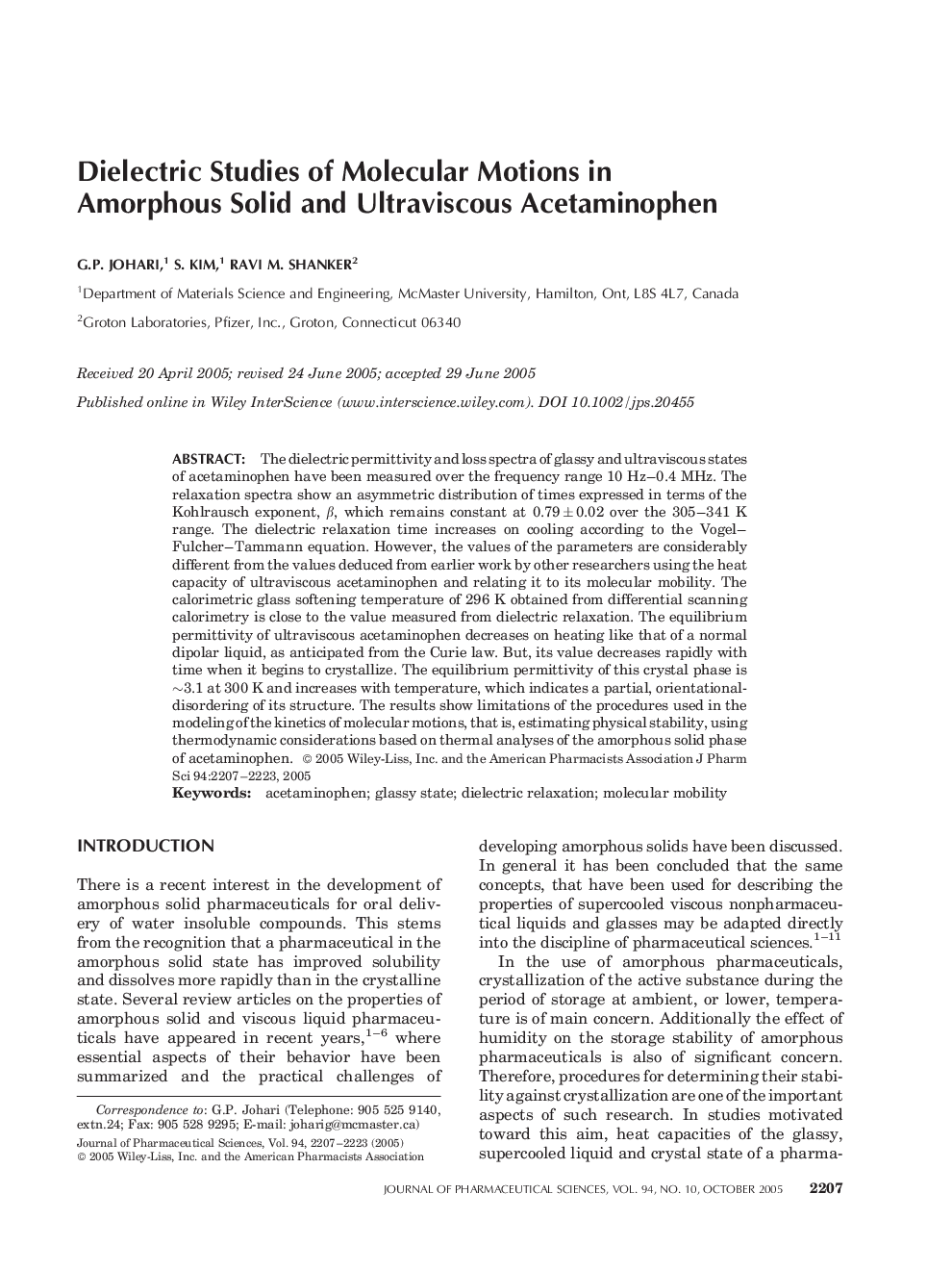| Article ID | Journal | Published Year | Pages | File Type |
|---|---|---|---|---|
| 2486521 | Journal of Pharmaceutical Sciences | 2005 | 17 Pages |
Abstract
The dielectric permittivity and loss spectra of glassy and ultraviscous states of acetaminophen have been measured over the frequency range 10 Hz-0.4 MHz. The relaxation spectra show an asymmetric distribution of times expressed in terms of the Kohlrausch exponent, β, which remains constant at 0.79 ± 0.02 over the 305-341 K range. The dielectric relaxation time increases on cooling according to the Vogel-Fulcher-Tammann equation. However, the values of the parameters are considerably different from the values deduced from earlier work by other researchers using the heat capacity of ultraviscous acetaminophen and relating it to its molecular mobility. The calorimetric glass softening temperature of 296 K obtained from differential scanning calorimetry is close to the value measured from dielectric relaxation. The equilibrium permittivity of ultraviscous acetaminophen decreases on heating like that of a normal dipolar liquid, as anticipated from the Curie law. But, its value decreases rapidly with time when it begins to crystallize. The equilibrium permittivity of this crystal phase is â¼3.1 at 300 K and increases with temperature, which indicates a partial, orientational-disordering of its structure. The results show limitations of the procedures used in the modeling of the kinetics of molecular motions, that is, estimating physical stability, using thermodynamic considerations based on thermal analyses of the amorphous solid phase of acetaminophen. © 2005 Wiley-Liss, Inc. and the American Pharmacists Association
Related Topics
Health Sciences
Pharmacology, Toxicology and Pharmaceutical Science
Drug Discovery
Authors
G.P. Johari, S. Kim, Ravi M. Shanker,
